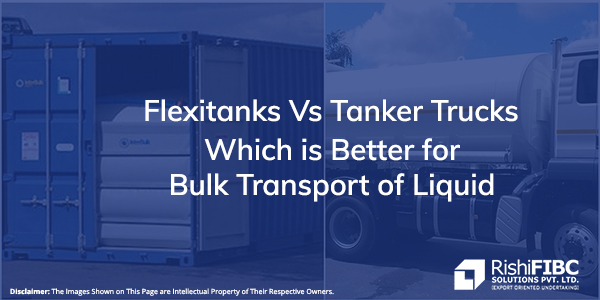Flexitanks Vs Tanker Trucks: Which is Better for Bulk Transport of Liquid
When it comes to transporting bulk liquid items, the popular choice of many companies is flexitanks and tanker trucks. But which mode of transportation is better than the other? It all comes down to what exactly you are shipping, from which part of the world you are doing so and the time it takes to reach its destination.
Flexitank Vs Tanker Trucks
Whether it is size, or sanitation, flexitanks and tanker trucks are distinct from one another.
Sanitation Standards
While tanker containers can be utilized again, they need to be systematically cleaned and certified as they come with strict sanitation procedures. The rules are even more stringent for the transportation of food items. While the norms help to reduce contamination, the receiver has to shell out a few additional bucks.
Flexitanks, on the other hand can be used only once so as to maintain the hygiene levels of the food items and chemicals. They come with strict standards of sanitation too. Even though you need to purchase a new flexitank every time you want to ship a product over, you save big as they come with additional advantages.
Size Matters
You can get tanker trucks in many sizes. They also transport items in bulk seamlessly as they can ship around 5,500 to 11,600lbs seamlessly. If you do not want to transport items in bulk or want to make local deliveries, you can choose the smaller trucks that carry less than 3,000 gallons.
There is never a problem when it comes to sizes for flexitanks as they are available in many sizes. The standard volumes consist of 16 to 24 liters while some flexitanks even provide transportation for volumes as low as 10,000 liters.
Cost and Delivery Criteria
The delivery options are better and more proficient with tankers because they help to transport the deliveries of many customers all at once. You can effortlessly transport gasoline, milk or juices in tankers as they come with a benefit of having up to six compartments. This ensures that multiple grades are transferred in one trip itself.
When operated with care and maintained impeccably, tankers are long lasting and more resilient. If the same product is being transported, tankers prove to be friendly on the budget, especially in the long run.
Flexitanks are cost effective as they are made from materials that are cheaper than tankers. They also save time, especially during the packing and unpacking process. You don’t need extra packaging even if your shipment is extra large as flexibags come with the largest packaging size. They are not reusable so you do not pay any fee to clean them up. You only have to pay one-way freight while cargo loss is greatly reduced as the liquid is easy to drain from one vessel to the next. The liquid does not move around during the transportation process. So, you do not need door-to-door shipping.
Flexitanks also come with heating pads, thus preventing certain liquids from heating during transports. Likewise, flexitanks can also be refrigerated in case of transportation of milk, wine or other temperature sensitive products.
The Verdict
We see that tankers are great for transporting liquid fuels and gases although they can be built especially for food transport, flexitanks typically ship non-edible and food-grade liquids. Although tankers are known to be long lasting and durable, flexitanks minimize shipping costs. For additional information on flexitanks, a good flexitanks manufacturer can provide you with detailed and more customized solutions. Rishi FIBC is one such flexitanks manufacturer in India that is trusted by logistics companies in India and abroad.



